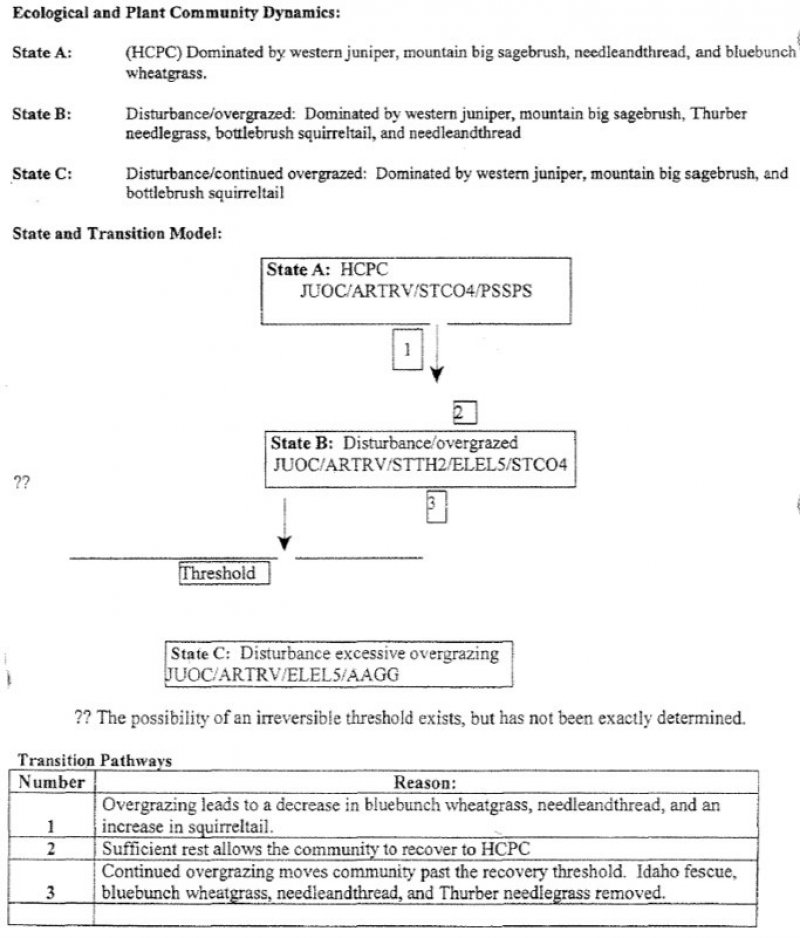
Natural Resources
Conservation Service
Ecological site R010XA675OR
Juniper Hills 8-11 PZ
Last updated: 4/02/2025
Accessed: 12/20/2025
General information
Provisional. A provisional ecological site description has undergone quality control and quality assurance review. It contains a working state and transition model and enough information to identify the ecological site.
MLRA notes
Major Land Resource Area (MLRA): 010X–Central Rocky and Blue Mountain Foothills
This MLRA is characterized by gently rolling to steep hills, plateaus, and low mountains at the foothills of the Blue Mountains in Oregon and the Central Rocky Mountains in Idaho. The geology of this area is highly varied and ranges from Holocene volcanics to Cretaceous sedimentary rocks. Mollisols are the dominant soil order and the soil climate is typified by mesic or frigid soil temperature regimes, and xeric or aridic soil moisture regimes. Elevation ranges from 1,300 to 6,600 feet (395 to 2,010 meters), increasing from west to east. The climate is characterized by dry summers and snow dominated winters with precipitation averaging 8 to 16 inches (205 to 405 millimeters) and increasing from west to east. These factors support plant communities with shrub-grass associations with considerable acreage of sagebrush grassland. Big sagebrush, bluebunch wheatgrass, and Idaho fescue are the dominant species. Stiff sagebrush, low sagebrush, and Sandberg bluegrass are often dominant on sites with shallow restrictive layers. Western juniper is one of the few common tree species and since European settlement has greatly expanded its extent in Oregon. Nearly half of the MLRA is federally owned and managed by the Bureau of Land Management. Most of the area is used for livestock grazing with areas accessible by irrigation often used for irrigated agriculture.
Ecological site concept
In reference condition, this site supports a plant community dominated by scattered old growth western juniper (Juniperus occidentalis) in the overstory, mountain big sagebrush (Artemisia tridentata ssp. vaseyana) in the shrub layer and both needleandthread (Hesperostipa comata) and bluebunch wheatgrass (Pseudoroegneria spicata ssp. spicata) in the herbaceous layer. Abiotically, this site is characterized by shallow to moderately deep, somewhat excessively drained soils formed in volcanic ash. The high ash content of these soils increases available water content and effective precipitation thereby facilitating the presence of species such as mountain big sagebrush. Historically, plant community dynamics were driven by disturbances such as fire, drought and insect/disease. Presently, reference conditions are less common and current dynamics are influenced by the spread of invasive species, infill of western juniper, livestock grazing pressures and fire suppression.
Associated sites
| R010XA659OR |
Juniper Pumice Plains 8-11 PZ occupying adjacent plains |
|---|
Similar sites
| R010XA027OR |
Juniper Pumice Flat 8-10 PZ mesic rather than frigid soil temperature regime |
|---|---|
| R010XA009OR |
Juniper Shrubby Pumice Flat 10-12 PZ mesic rather than frigid soil temperature regime, higher precipitation |
Table 1. Dominant plant species
| Tree |
(1) Juniperus occidentalis |
|---|---|
| Shrub |
(1) Artemisia tridentata ssp. vaseyana |
| Herbaceous |
(1) Hesperostipa comata |
Click on box and path labels to scroll to the respective text.
Ecosystem states
| T1A | - | Prolonged inappropriate grazing management |
|---|
State 1 submodel, plant communities
| 1.1A | - | Prolonged inappropriate grazing management |
|---|---|---|
| 1.2A | - | Extended rest from grazing |
